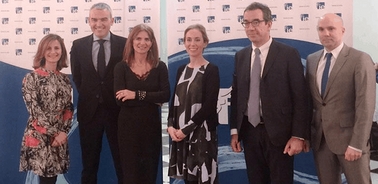- Home
- News And Events
- What’s Going On
- Ie Luxury Barometer 2015 Highlights Key Factors For Success In Today’s Luxury Sector
IE Luxury Barometer 2015 highlights key factors for success in today’s luxury sector

Building memorable experiences for clients, the disruption of new digital platforms and a focus on creativity are some of the factors that are now key for the luxury industry.
These are some of the main findings of the IE Luxury Barometer 2015, a report drawn up by the IE and MasterCard Observatory on the Premium Market and Prestige Products. The results highlight the issues that experts in the field agree have marked the luxury sector’s agenda in 2015 and will shape its priorities in 2016.
The main findings obtained by the IE Luxury Barometer 2015 are as follows:
- Over 80% of the panel of experts selected creating memorable experiences as a priority for luxury firms. This was not the first time this factor is winner of the Barometer, having obtained the top position in the 2014 edition.
- New business development trends are appearing. The second position was held by the disruption of digital platforms, like, for example, Farfetch, which has had a direct impact on the way luxury firms compete. This factor is even more important if the fact it is the first time it has appeared in the top ten is taken into account.
- Creativity improves value levels. Two factors related with creativity are included in the top ten positions. The importance and key role of creativity holds third position, and the need to combine analytical talent with creative talent is in seventh position. This combination shows how creativity is still a key factor for competitiveness in the sector.
- The personalization and protection of exclusivity forms another important part of luxury business strategy. As in 2014, both issues scored highly in the Barometer, clearly demonstrating how important they are for luxury firms.
- Corporate Social Responsibility (CSR) is an increasingly key response to the new values of luxury sector clients. It is effectively the factor that has climbed the highest number of positions among those that figured in the 2014 report.
“These results reveal how certain key elements of the luxury industry remain in place in a changing environment. Methods of distribution and communication change, yet the need to build relevant dreams for clients continues to play a key role in the success of luxury brands,” says María Eugenia Girón, co-author of the report, and director of the IE and MasterCard Observatory on the Premium Market and Prestige Products.
"The IE Luxury Barometer Report of 2015 shows us that creativity continues to play a pivotal role in the way luxury products are conceived. Companies in the sector have to make an effort to establish their own creative process as a cornerstone for providing value for clients,” says David Millán, co-author of the report and a professor at IE.
The IE Luxury Barometer report 2015 has a dual objective. First, to reveal the visions professionals working in the luxury and prestige sector had of the most important aspects and trends in the market in 2015, And second, to explore the implications that these aspects can have for the subsequent development of the market, both in the immediate future and long term. The methodology of the report consisted of two different parts. First, quantitative research was carried out on a sample of 50 people with recognized knowledge of the market. The second part consisted of a qualitative study based on a roundtable created to analyze the results of the initial quantitative survey.
The IE Luxury Barometer Report 2015 examined 30 key factors. These factors were selected in such a way as to illustrate the most important aspects that have influenced the luxury market in the course of 2015. These factors are also considered to be a priority in the agendas of executives working in the sector. In this year’s edition of the Barometer, the selection of the 30 factors included some that were not present in the previous year’s edition. The 2015 edition seeks to provide a deeper perspective of the digital transformation of luxury firms. In order to achieve this, instead of including just one factor related to digital transformation, two independent factors were included, to differentiate digital communication from digital sales.
Another addition to the report comprises key factors that have appeared in specialized media. These consist of two main areas. The first is the role of pricing and growth strategy. In 2015 the inherent complexity involved in managing prices on a global scale became very apparent. It was a subject that featured frequently on the covers of leading business publications. The second is the role of growth and, more specifically, how luxury firms are seeking alternative sources of growth in the face deceleration in the Chinese market.
- Luxury brands create memorable experiences.
- The disruption caused by digital platforms.
- The role of talent and creativity.
- Product personalization.
- Social and environmental responsibility.
- Protecting exclusivity, aspiring to a position of absolute luxury.
- The need to balance management and creativity.
- The role of digital platforms: communication and forging links with the client.
- The continuation dilemma: the arrival of new generations.
- The growth challenge.